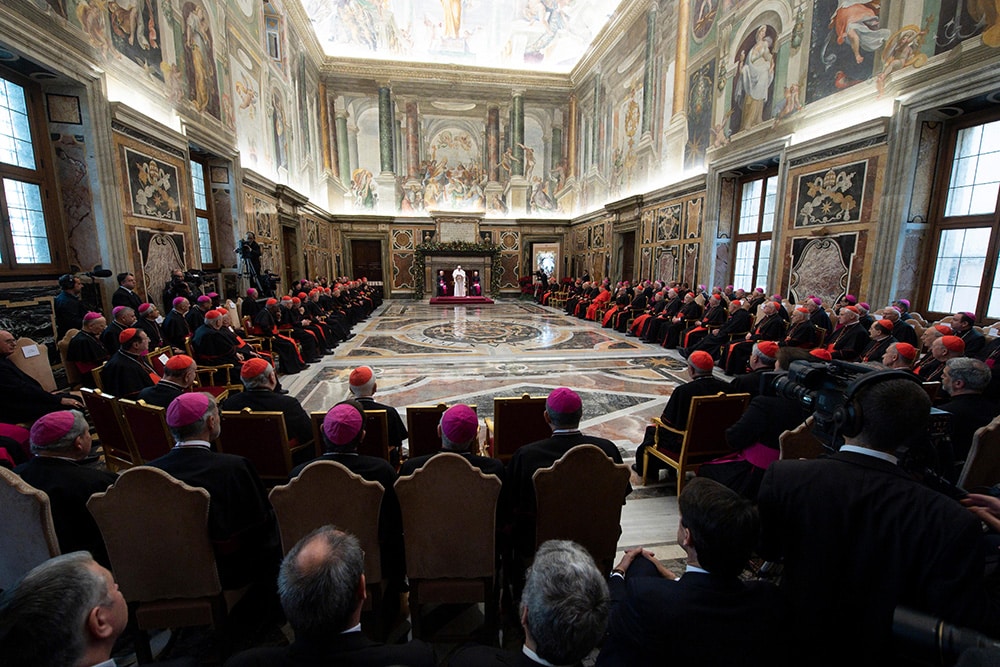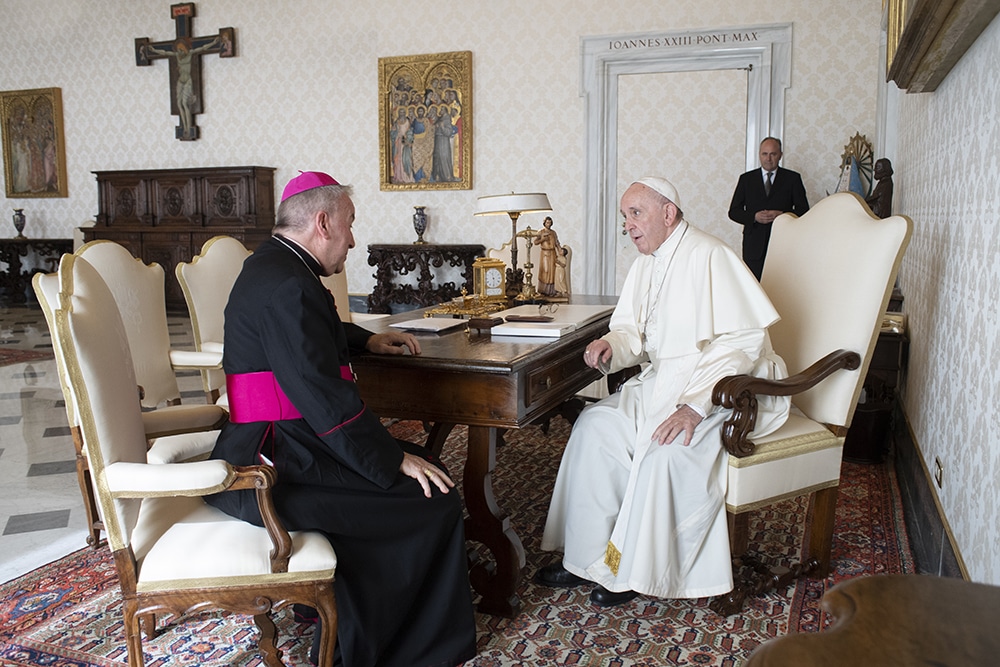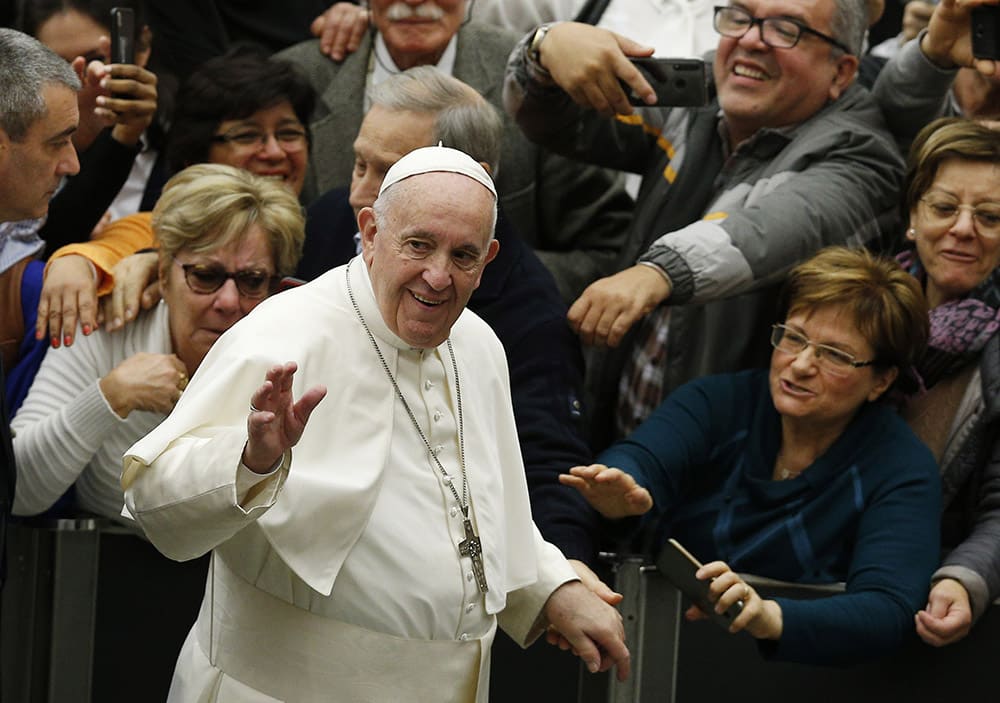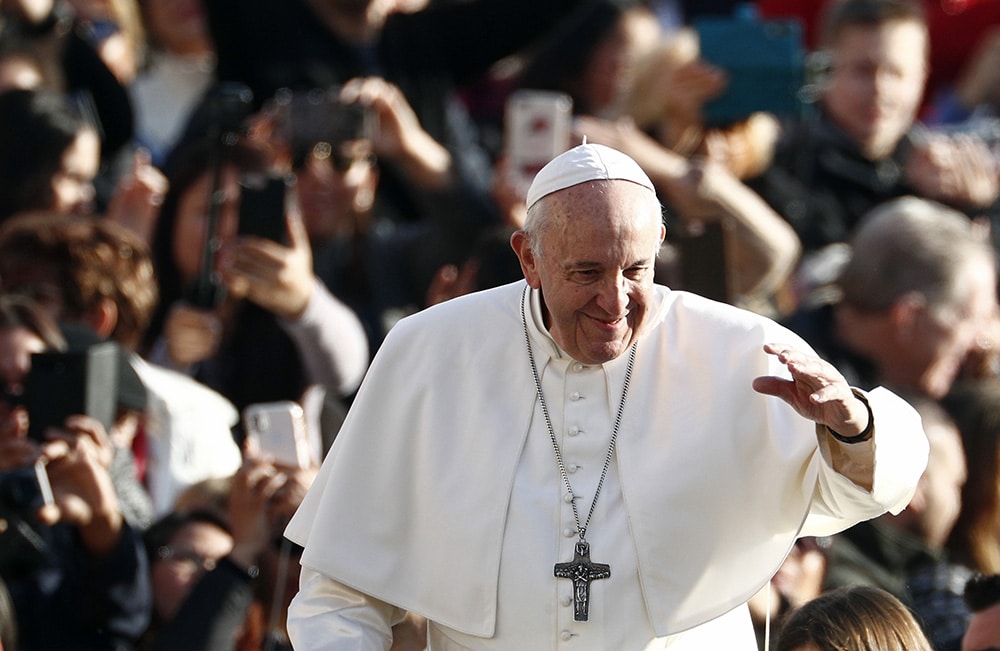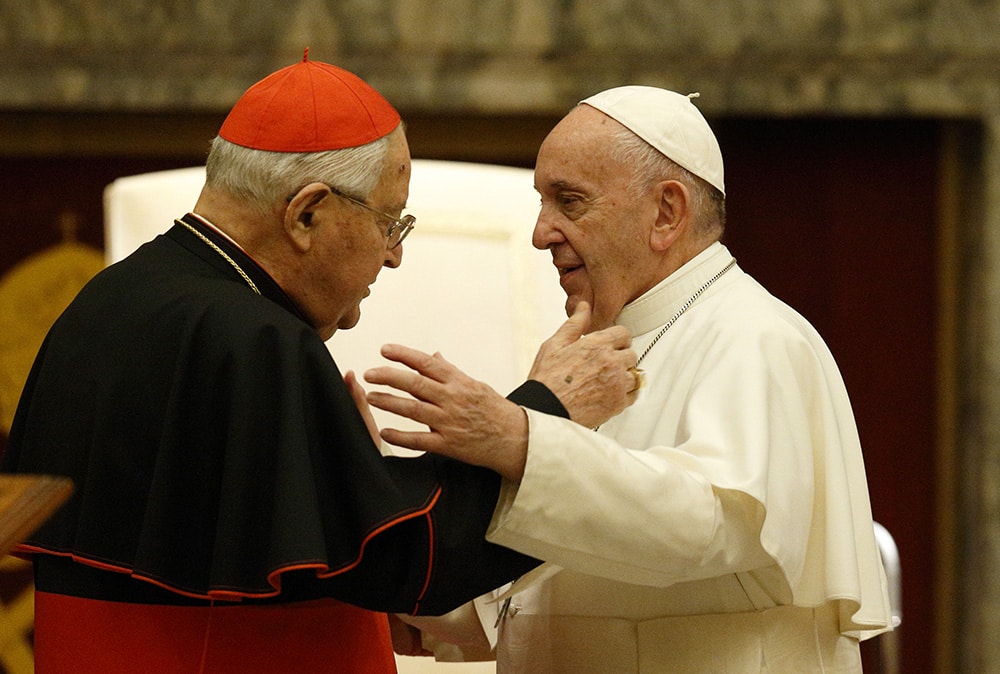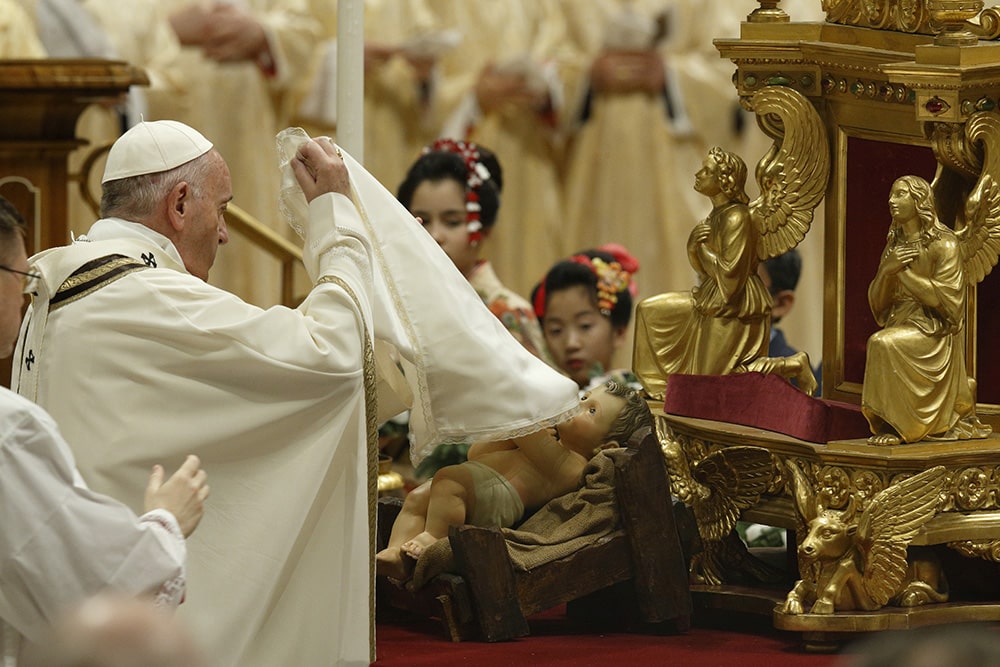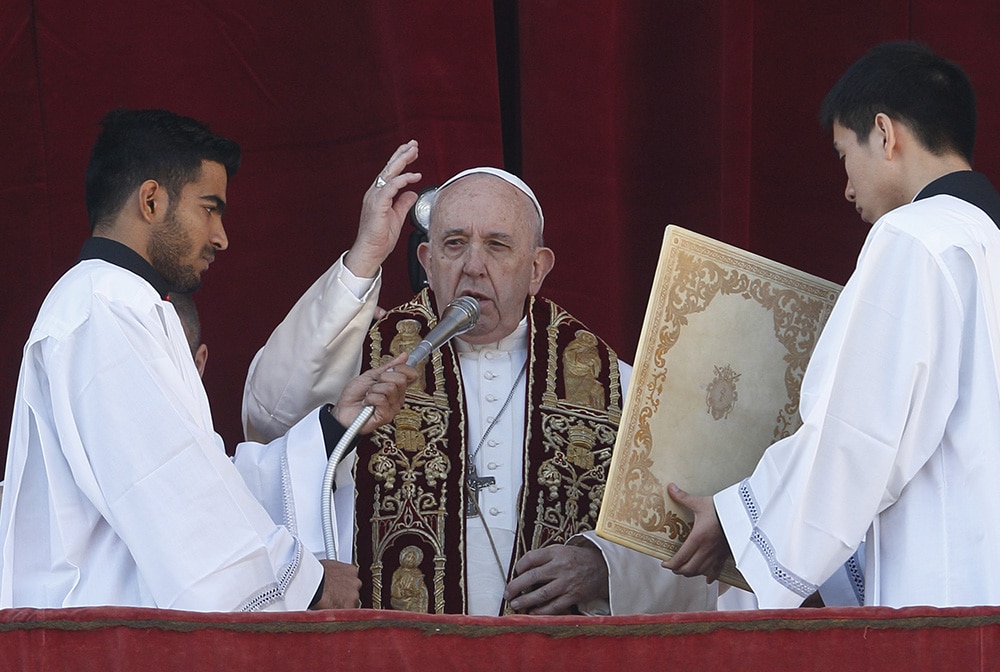One of the news items out of the Vatican that skated mostly under the radar in early December was the meeting of the “C6” council of cardinal advisers to Pope Francis, who are tasked with producing the new law that will serve as the blueprint for the reformed Roman Curia. It was their 32nd meeting, and they’re not done yet.
Reform of the Roman Curia — the Catholic Church’s central governing and administrative apparatus — is a centerpiece of Pope Francis’s pontificate. Senior churchmen, who were members of the drafting committee he created six years ago at the start of his reign, have explained that the aims of the reform effort are to streamline the bureaucracy, and also to render it better able to serve not only the universal Church, but also the local Churches that appeal to its departments — dicasteries — and rely on its dispositions and determinations.
In particular, draftsmen of the document — working title: Praedicate Evangelium, an exhortatory “Preach the Gospel!” — say it seeks to make evangelization the lodestar of the Curia. “[Praedicate Evangelium] puts evangelization at the center of the Church, and of everything the Curia does,” C6 member Cardinal Oswald Gracias of Mumbai, India, told Spain’s Vida Nueva earlier this year. “Evangelization,” he continued, “will [therefore] be the first dicastery.” There is a sense in which that appears to be true — it is reportedly the first dicastery treated in the draft document — but it does not tell us as much as it seems on a quick reading.
Shuffling Vatican departments
The Congregation for the Evangelization of Peoples is already extremely powerful. A leaked draft of the reform law shows that it is slated to expand when it absorbs the junior Pontifical Council for the Promotion of the New Evangelization. It also appears poised for placement beyond the reach of the Congregation for the Doctrine of the Faith (CDF), which historically has been known as la suprema — the alpha in the curial pack — because of its seniority and role as “doctrinal watchdog.”
Several veterans on the Vatican beat have noted that the CDF’s role in the new order appears rather different and reduced. Perhaps a more neutral way to say it is that the CDF appears to have a new focus: discipline rather than doctrinal oversight. It is not a criticism of the decision to intensify the CDF’s focus on its judicial and disciplinary role to note that the absence of a strong central control on teaching could prove conspicuous before too long.
Charles Collins of Crux has observed that the curial department poised to come out of the reform most strengthened is the Secretariat of State. Collins offered a practical illustration. “CDF was a check on the secretariat’s power,” he observed, “since it could put a hold on Vatican documents to clear up any doctrinal ambiguity. During the Francis pontificate, however, CDF has often taken a reduced role in preparing and vetting Vatican statements. “Under Praedicate Evangelium,” Collins said, “this change in status will become official.”
Ed Condon of Catholic News Agency offered a more granular reading of the draft text, noting that the departments of the Vatican bureaucracy, with one exception, are renamed “dicasteries.” The issue is not semantic. The dicasteries are to be juridically equal among themselves. As this Vatican watcher has observed elsewhere, however, that means some dicasteries will be more equal than others — and on that count, Evangelization appears poised to be “first among equals.”
“The single exception to this new uniform designation,” Condon wrote, “is the Secretariat of State, which retains its traditional name and is unquestionably the ‘first’ Vatican department under the new constitution.”
Work in progress
So, there is at least a little daylight between what the draftsmen say the new law will do and what it appears designed to accomplish. Making evangelization the guiding principle of the Curia stands at least as good a chance of bureaucratizing the Church’s missionary mandate as it does of making the Curia fit for a 21st-century purpose. The reason: The Roman Curia is a bureaucracy. It is an organ of power — papal power.
In any case, a goal is not a plan — not even a rough sketch — and a plan is not a draft, and a draft is not a definitive text, and the devil is in the details (of the final product and at every step along the way).
An email blast to journalists accredited with the Press Office of the Holy See on Dec. 4 said the 32nd meeting took place over three days, that Pope Francis participated in the working sessions as his schedule allowed and that the next one will be held in February.
That’s all pretty standard, though the timing of the release was interesting, as it came before the afternoon session, suggesting nobody expected there to be any news from it, or even cared to pretend there might have been.
The statement did provide some detail about the meeting that took place. The major topics were the ongoing review of the draft document, especially the relations between the Roman Curia and the bishops’ conferences, and the presence of the laity in decision-making roles in the Curia and other Church organizations.
“From September until a few days before the [latest] session began,” noted the communiqué from the press office, “suggestions continued to arrive regarding the text of the new apostolic constitution, the reading and evaluation of which will continue in the next session.”
In other words, after six years of work, the draft the council produced is still in need of significant consideration, editing and revision. The men responsible for seeing the law through to enactment do not seem terribly rushed, either.
Christopher Altieri writes from Rome.

